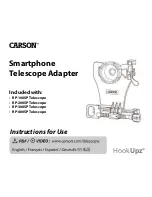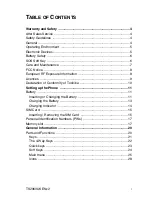
53
has tested hearing aids for
interference from handheld
wireless phones and helped
develop a voluntary standard
sponsored by the Institute
of Electrical and Electronic
Engineers (IEEE). This standard
specifies test methods and
performance requirements
for hearing aids and wireless
phones so that no interference
occurs when a person uses
a ‘compatible’ phone and a
‘compatible’ hearing aid at
the same time. This standard
was approved by the IEEE in
000. The FDA continues to
monitor the use of wireless
phones for possible interactions
with other medical devices.
Should harmful interference
be found to occur, the FDA will
conduct testing to assess the
interference and work to resolve
the problem.
12. Where can I find
additional information?
For additional information,
please refer to the following
resources:
FDA web page on wireless
phones (http://www.fda.gov/
cdrh/ phones/index.html)
Federal Communications
Commission (FCC) RF Safety
Program (http://www.fcc.gov/
oet/ rfsafety)
International Commission
on Non-lonizing Radiation
Protection (http://www.icnirp.de)
World Health Organization
(WHO) International EMF Project
(http://www.who.int/emf)
National Radiological Protection
Board (UK) (http://www.nrpb.
org.uk/)
Содержание T320G
Страница 1: ...User Guide ENGLISH FRANÇAIS www lg com ca LG T320G P N MFL67020402 1 0 ...
Страница 2: ...Bluetooth QD ID B016856 ...
Страница 30: ...28 Technical data Ambient Temperatures Max 55 C discharging 45 C charging Min 10 C ...
Страница 93: ...32 Données techniques Température ambiante Maximum 55 C décharge 45 C charge Minimum 10 C ...
















































